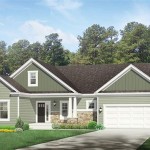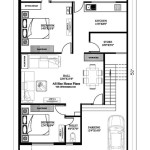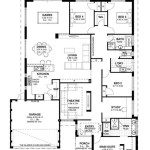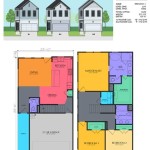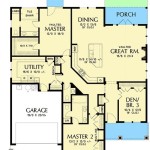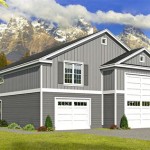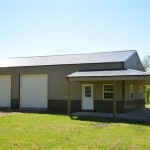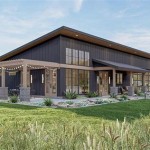Low Country House Plans Elevated: Adapting Classic Design for Modern Resilience
Low Country architecture, characterized by its broad rooflines, wide porches, and connection to the surrounding landscape, holds a distinct charm. However, traditional Low Country designs, while beautiful, often require adaptation to address modern concerns, particularly those related to coastal flooding and changing environmental conditions. Elevating Low Country house plans provides a practical solution, maintaining the aesthetic appeal while enhancing the home's resilience and functionality.
This approach involves raising the main living space of the home above ground level, typically supported by pilings or a raised foundation. This elevation mitigates flood risk, allows for better ventilation, and can even create additional usable space beneath the house. Successfully integrating elevation into Low Country designs requires careful planning and consideration of various factors, from architectural style to site-specific conditions.
Key Considerations for Elevated Low Country Designs
The successful implementation of elevated Low Country house plans hinges on several critical considerations. These include understanding the site's specific flooding characteristics, selecting appropriate elevation materials and techniques, and maintaining the aesthetic integrity of the Low Country architectural style.
Site Assessment and Flood Plain Analysis: The first step in designing an elevated Low Country home is a thorough assessment of the property. This involves determining the base flood elevation (BFE) for the site, as established by FEMA (Federal Emergency Management Agency) or local authorities. The BFE represents the anticipated height floodwaters will reach during a base flood event, often referred to as a 100-year flood. Elevation must exceed BFE requirements. Understanding the site's topography, drainage patterns, and potential for erosion is also essential for informed design decisions. Soil testing is necessary to determine the load-bearing capacity for foundation decisions.
Foundation and Elevation Materials: The choice of foundation and elevation materials greatly impacts the structural integrity and aesthetic appeal of the elevated home. Common options include concrete pilings, treated wood posts, and masonry piers. Each material offers distinct advantages and disadvantages in terms of cost, durability, and visual integration with the Low Country style. Concrete pilings offer exceptional strength and longevity, making them suitable for areas with high flood risk or unstable soil conditions. Treated wood posts provide a more traditional look and can be more cost-effective, but require regular maintenance and are susceptible to rot and insect infestation. Masonry piers, often constructed from brick or stone, can be used to create a visually appealing foundation, complementing the Low Country aesthetic. The selection process must account for design consideration, local building codes, and homeowner preference.
Architectural Harmony and Design Integration: One of the key challenges in elevating Low Country house plans is maintaining the architectural integrity of the style. This requires careful attention to proportion, scale, and detailing. The elevated foundation should be integrated seamlessly into the overall design, rather than appearing as an afterthought. Employing strategies such as screening the foundation with lattice work, landscaping, or skirting can help to create a more cohesive and visually appealing design. The use of traditional Low Country elements, such as wide porches, gabled roofs, and ample windows, ensures that the elevated home retains its characteristic charm. Strategic landscaping and the placement of trees, shrubs, and other plants can soften the appearance of the elevated foundation and create a seamless transition between the house and the surrounding landscape. Careful consideration must be given to the design of entry stairs and ramps to ensure they are both functional and aesthetically pleasing. These elements should be integrated into the overall design of the porch and facade, rather than appearing as separate, utilitarian additions.
Advantages of Elevated Low Country Homes
Elevating Low Country house plans offers numerous advantages beyond flood protection. These include improved ventilation, increased usable space, and enhanced property value.
Flood Protection and Reduced Flood Insurance: The primary benefit of elevating a Low Country home is the significant reduction in flood risk. By raising the main living space above the BFE, the home is less vulnerable to damage from flooding. This not only protects the property from physical damage but also results in lower flood insurance premiums. In many cases, the savings in flood insurance over the lifetime of the home can offset the cost of elevation. Additionally, elevating the home can reduce the stress and anxiety associated with living in a flood-prone area, providing peace of mind for the homeowner.
Improved Ventilation and Moisture Control: Elevating a home allows for better air circulation underneath the structure, reducing the risk of moisture buildup and mold growth. This is particularly important in humid coastal environments, where moisture can lead to significant problems. The increased airflow helps to keep the crawl space dry and well-ventilated, preventing the growth of mold and mildew, which can cause health problems and structural damage. Better ventilation also helps to regulate the temperature inside the home, reducing the need for air conditioning and lowering energy costs. Properly designed vents and drainage systems further enhance moisture control and prevent water from accumulating under the house.
Increased Usable Space and Outdoor Living Areas: Elevation can create additional usable space beneath the home, which can be utilized for parking, storage, or even outdoor living areas. This space can be enclosed to create a garage or workshop, or left open to provide a shaded patio or recreation area. The elevated foundation also creates a more defined separation between the house and the ground, enhancing the sense of privacy and creating a more comfortable outdoor living environment. Strategically placed landscaping and outdoor furniture can transform the space beneath the house into a functional and inviting extension of the home. In some cases, municipalities will allow for a percentage of the space beneath an elevated home to be used for habitable space, provided it meets certain requirements.
Maintaining Low Country Aesthetic with Elevated Designs
Successfully integrating elevation into Low Country architecture requires careful attention to preserving the style's defining characteristics. This involves employing specific design strategies and details that blend the elevated foundation seamlessly with the traditional features of Low Country homes.
Wide Porches and Generous Overhangs: Wide porches are a hallmark of Low Country architecture, providing shaded outdoor living spaces and connecting the home to the surrounding landscape. When elevating a Low Country home, maintaining or enhancing the porch is crucial for preserving the style's aesthetic. Porches can be extended along the front, side, or rear of the home, creating ample space for relaxing, entertaining, or simply enjoying the view. Generous roof overhangs provide additional shade and protection from the elements, further enhancing the comfort and livability of the porch. Consider adding details such as porch swings, rocking chairs, and outdoor lighting to create a welcoming and inviting atmosphere. Proper porch design can enhance the elevation of the property as well.
Traditional Materials and Detailing: Using traditional materials and detailing is essential for maintaining the authenticity of Low Country architecture in elevated designs. This includes incorporating elements such as wood siding, shingle roofing, and traditional window styles. The use of natural materials, such as wood, brick, and stone, adds warmth and character to the home, reflecting the region's rich architectural heritage. Detailing such as window shutters, decorative trim, and porch railings further enhance the visual appeal of the home and contribute to its overall Low Country aesthetic. These elements should be carefully selected and integrated into the design to create a cohesive and harmonious appearance. The selection of materials should also consider durability and resistance to the harsh coastal environment.
Strategic Landscaping and Screening: Landscaping plays a crucial role in softening the appearance of the elevated foundation and integrating the home into the surrounding landscape. Planting shrubs, trees, and flowering plants around the base of the house can help to conceal the foundation and create a more natural and inviting appearance. Climbing vines can be used to cover the foundation walls, adding texture and visual interest. Consider using native plants that are well-adapted to the local climate and soil conditions. Screening the foundation with lattice work or other decorative elements can also help to mitigate its visual impact. The landscaping should be designed to complement the overall architectural style of the home and enhance its curb appeal. Proper drainage and irrigation systems are essential for maintaining healthy landscaping in a coastal environment.

Low Country House Plans Floor

Plan 9152gu Low Country House With Elevator Beach Plans

Plan 9135gu Gracious Low Country House Plans Elevated

Low Country House Plan With Elevator 9140gu Architectural Designs Plans

Plan 91003gu Raised Low Country Home Homes House Plans

Low Country Beauty 9179gu Architectural Designs House Plans

11 Raised Low Country Ideas House Plans Design Southern

Plan 9143gu Raised Low Country Classic With Elevator Balcony Design Beach House Plans

Tidewater Low Country House Plans Elevated Home Homeslice

Low Country House Plans Coastal From Home

